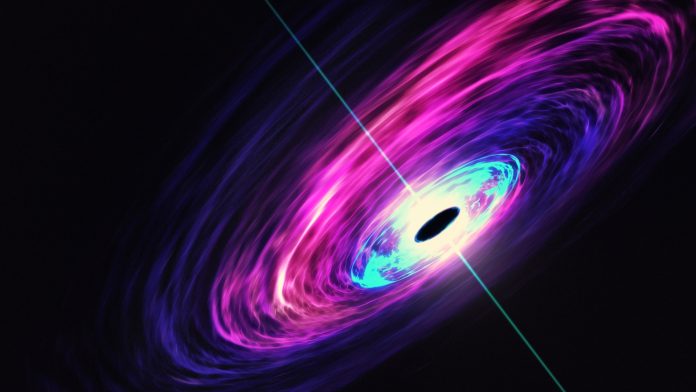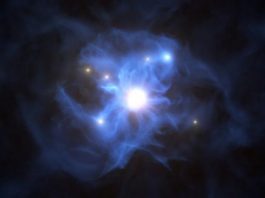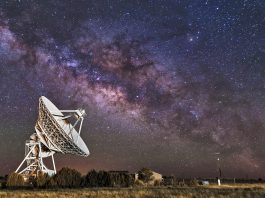Researchers at Tohoku University have discovered that mellow supermassive black holes play a significant role in the origin of high-energy cosmic particles.
The Universe is full of energetic particles, including x-rays, gamma rays and neutrinos. However, currently, the origins of most of these high-energy cosmic particles are unknown and unexplained.
Now, an international team of researchers at Tohoku University has theorised a scenario that is capable of explaining these mysterious origins, suggesting that black holes with low activity behave as massive high-energy cosmic particle factories.
The team’s research findings have been published in the journal Nature Communications.
High-energy cosmic particle factories
Gamma rays are high-energy photons that are many orders of magnitude more energetic than visible light, and in fact, space satellites have perceived cosmic gamma rays with energies of megaelectron to gigaelectron volts.
Neutrinos are subatomic particles with a mass of nearly zero that seldom intermingle with ordinary matter.
Both gamma rays and neutrinos should be generated by strong cosmic-ray accelerators or surrounding environments in the Universe. However, their origins are currently a mystery. It is broadly understood that active supermassive black holes (so-called active galactic nuclei), particularly those with powerful jets, are the most encouraging emitters of high-energy gamma rays and neutrinos. However, the latest research has shown that they do not explain the observed gamma rays and neutrinos, indicating that other source classes are necessary.
This novel model highlights that not only active black holes but also non-active, ‘mellow’ black holes play a significant role in the production of high-energy cosmic particles, playing the role of gamma-ray and neutrino factories.
Mellow supermassive black holes
The generally accepted hypothesis is that all galaxies comprise supermassive black holes at their centres. When matter falls into a black hole, a massive amount of gravitational energy is released. This phenomena heats the gas, establishing high-temperature plasma. The temperature is capable of reaching temperatures as high as tens of billions of degrees Celsius for low-accreting black holes because of inefficient cooling, and the plasma can produce gamma rays in the megaelectron volt range.
As individual objects, these mellow black holes are dim, but they are numerous in the Universe. The group at Tohoku discovered that the subsequent gamma rays from low-accreting supermassive black holes could significantly add to the detected gamma rays in the megaelectron volt range.
In the plasma, it is possible to accelerate the energies of protons to roughly 10,000 times higher than those attained by the Large Hadron Collider (LHC), which is the largest human-made particle accelerator.
The sped-up protons generate high-energy neutrinos via exchanges with matter and radiation, which can account for the higher-energy part of the cosmic neutrino data. This image can be applied to active black holes as indicated by previous research. The supermassive black holes including both active and non-active galactic nuclei can explain a large fraction of the observed IceCube neutrinos in a wide energy range.
Going forward, multi-messenger observational programmes are vital to efforts to distinguish the origin of cosmic high-energy particles. The currently theorised scenario forecasts that gamma-ray counterparts in the megaelectron volt range to the neutrino sources. Most of the active gamma-ray detectors are not tuned to detect them; but future gamma-ray experiments, together with next-generation neutrino experiments, will be able to detect the multi-messenger signals.









